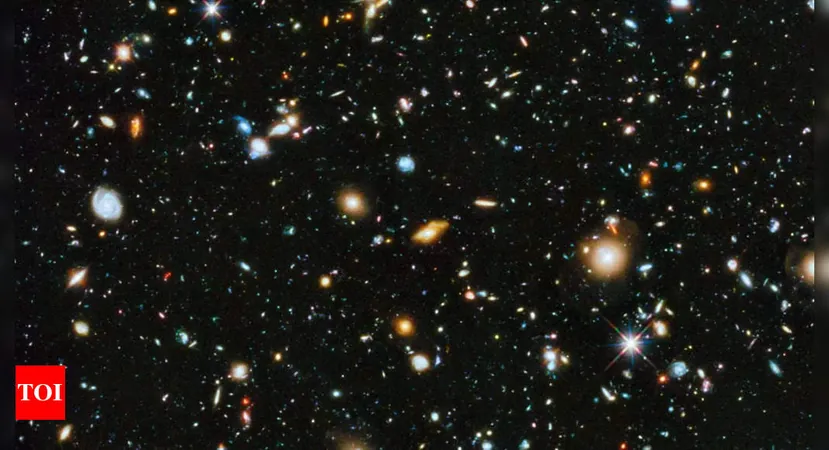
Hubble Space Telescope: Unveiling Breathtaking New Images of the Cosmos!
2024-11-18
Author: Wei Ling
Prepare to be amazed as the Hubble Space Telescope brings us even more breathtaking views of our universe, showcasing an array of fascinating astronomical objects. Among the highlights are the binary star system R Aquarii, the magnificent Omega Centauri globular cluster, the grand M87 galaxy with its supermassive black hole, and the dynamic starburst galaxy NGC 5253. Additionally, the striking barred spiral galaxy NGC 1672 and the beautifully intricate spiral galaxy NGC 3810 further illustrate the galaxy dynamics that scientists continue to unravel.
R Aquarii: A Dazzling Cosmic Dance
R Aquarii, located in the constellation Aquarius, is a binary star system that features a dramatic interaction between a vibrant red giant and a compact white dwarf. This cosmic pair engages in a mesmerizing dance, resulting in complex nebulae and producing variability in brightness that astounds astronomers and enthusiasts alike.
Omega Centauri: A Glittering Stellar Oasis
Omega Centauri ranks as the largest and brightest globular cluster in our Milky Way galaxy. Situated in the constellation Centaurus, it boasts around 10 million stars! This dazzling cluster is not only a spectacle for the naked eye but also a treasure trove of research opportunities for astronomers studying stellar evolution and dynamics.
M87: The Gateway to Understanding Black Holes
M87 is a supergiant elliptical galaxy found in the central region of the Virgo Cluster. It captured global attention when it became the first galaxy to have its supermassive black hole imaged, revealing the enigmatic heart of this colossal formation. Known for its energetic jets that shoot out at incredible speeds, M87 remains a focal point in the pursuit of understanding black hole physics and galaxy formation.
NGC 5253: Where Stars are Born
Located in the constellation Coma Berenices, NGC 5253 is a starburst galaxy characterized by intense and rapid star formation. Its bright and compact nucleus provides valuable insights into the evolutionary stages of galaxies and the processes that lead to accelerated star birth. This galaxy continues to be a hub for astronomical studies.
NGC 1672: The Spiral Wonder
The exceedingly beautiful NGC 1672, a barred spiral galaxy in the constellation Dorado, captivates researchers and skywatchers with its impressive central bar and prominent spiral arms. This galaxy serves as a living laboratory to explore the dynamics of galaxy formation and the mechanisms that give rise to spiral structures.
NGC 3810: The Dusty Spiral
Lastly, NGC 3810, a unique spiral galaxy located in the constellation Leo, exhibits prominent dust lanes that weave through its structure, creating a stark contrast with its bright core. This interaction between dust and light offers a window into the diverse evolutionary paths of galaxies and their interstellar environments.
Each image and discovery captured by the Hubble Space Telescope enriches our understanding of the universe's mysteries. As we continue to explore these cosmic marvels, the Hubble promises to unveil even more extraordinary aspects of space that will leave us in awe. Don't miss out on the latest updates and discoveries from the telescope that has redefined our view of the cosmos!





 Brasil (PT)
Brasil (PT)
 Canada (EN)
Canada (EN)
 Chile (ES)
Chile (ES)
 España (ES)
España (ES)
 France (FR)
France (FR)
 Hong Kong (EN)
Hong Kong (EN)
 Italia (IT)
Italia (IT)
 日本 (JA)
日本 (JA)
 Magyarország (HU)
Magyarország (HU)
 Norge (NO)
Norge (NO)
 Polska (PL)
Polska (PL)
 Schweiz (DE)
Schweiz (DE)
 Singapore (EN)
Singapore (EN)
 Sverige (SV)
Sverige (SV)
 Suomi (FI)
Suomi (FI)
 Türkiye (TR)
Türkiye (TR)